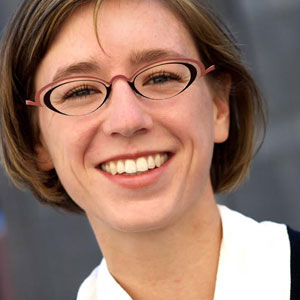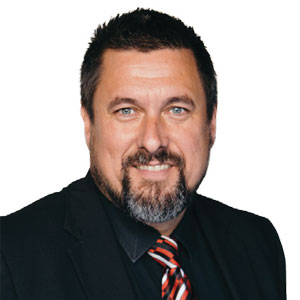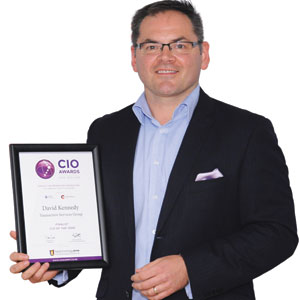THANK YOU FOR SUBSCRIBING

Purpose Accelerates Smart City Adoption
Susanne Seitinger, Global Smart Cities Segment Lead, Philips Lighting


Susanne Seitinger, Global Smart Cities Segment Lead, Philips Lighting
Introduction
In recent years, the smart city debate has taken a significant turn. We are increasingly moving away from discussing monolithic, top-down programs that prescribe specific technologies that cities should adopt. Instead, we are engaged in more open and targeted discussions about what benefits and improvements new technology can really deliver for civic leaders and citizens. As a city planner, urbanist and technologist this trend encourages me that the smart city community is moving in the right direction. Instead of talking about technology adoption for its own sake we are focusing on how purpose—shared purpose especially—accelerates smart city adoption.
Purpose can mean many different things depending on the particular context. I vividly remember a mayor of a large US city lamenting the fact that basic infrastructure upgrades aren’t “sexy” enough to gather popular support and yet they are often the cornerstone of what city governments must provide. In order to unpack the multifaceted nature of purpose, I propose thinking about purpose in three different categories: Infrastructure, Services, and Community.
Infrastructure
Cities have always been attractive because they are epicenters of cultural, economic, and artistic advancement. Yet, their density and diversity require significant resources and elaborate infrastructures for support. Public lighting, for example, is one of the most ubiquitous systems in many cities. It creates the potential for economic and civic life to continue safely into the evening hours and transforms the perception of nighttime. With the arrival of new digital light sources—LEDs—many cities are taking note of this underutilized resource. Street lighting’s connection to power, its ubiquity, and its visual impact on the public realms make public lighting the most interesting pathway for deploying Internet of Things (IoT) technologies such as sensors or actuators. The lighting becomes a conduit for these new technologies which are challenging to scale and maintain outdoors.
Connected public lighting is one of the most interesting pathways for deploying Internet of Things (IoT) technologies that enable the smart city.
While there is an immediate and inherent attractiveness to linking connected lighting with IoT systems, there is a fundamental need to anchor this combination with meaningful, productive uses. The City of Los Angeles partnered with Philips Lighting to deploy acoustic sensors in a pilot project. These sensors measure various statistics at an unprecedented rate to provide a much more detailed rendition of the urban soundscape. Planners can use the information to monitor the long-term effects of noise pollution or to ensure that mitigation strategies actually work beyond their initial implementation. With additional analytics, the data could inform emergency responders more quickly of accidents or crisis situations. These data-driven services can enrich how various city departments do their work—freeing them up from tedious, manual data collection and instead allowing them to focus on monitoring outcomes for citizens.
Another data-source connected lighting can reveal is a continuous monitoring of infrastructure’s energy consumption.
Connected public lighting is one of the most interesting pathways for deploying Internet of Things (IoT) technologies that enable the smart city.
Not only does the data generated by connected lighting provide a new, valuable resource, but also the systems themselves are changing in form. New lighting form factors are much smaller than in the past and can be less obtrusively incorporated into the urban environment. This has freed up space within poles for clever integration of other IoT and mobile services. For instance, network operators can integrate their small cells into poles to provide better connectivity in dense or underserved areas.
For city leaders, these improved ways of leveraging their infrastructure fundamentally change how they might think about them. The primary goal is no longer simply to reduce operational and maintenance costs, but also to consider new ways to generate revenue. They are transforming systems like lighting into productive resources that enable improved or even brand new city services.
Services
City residents rarely think regularly about what it takes to maintain mass transit systems, transportation, or public parks, but they interact with these city resources all the time. With the availability of data-driven services such as just-in-time transit information, residents increasingly seek to optimize their interaction with those city services. Will the bus or the subway get me to and from work faster today? Does the weather make it a good day for biking to work? The more people that use these services with increased frequency, the more data it feeds back into the ecosystem. However, this raises governance and data privacy questions.
In a study conducted across 1,950 residents and 615 business leaders in 12 global cities, one of the surprising things we found was around data and data sharing. When people were asked if they wanted to share data in order to improve certain services, they were really interested. When they were asked generically if they wanted to share their data, they disagreed. It speaks to the need for a shared purpose to improve a particular aspect of daily life.
This finding also raises the need for governance frameworks for data-driven services and the need to provide transparent frameworks for people to generate and use open data.
Community
A final perspective on shared purpose is how it relates to community. One of the most dramatic changes facilitated by technology is the myriad of channels available to directly communicate with citizens. Whether via social media, websites, APPs or other tools, more cities are trying to facilitate synchronous and asynchronous conversations about civic life.
The increase in information exchange is also two way. Perhaps initially a tool for communicating outwardly, tools such as See.Click.Fix., provide channels for citizens to provide feedback instantly. In the EIU survey mentioned above, 32 percent of citizens said that they are currently providing feedback to their local authorities, but more than one-half say they would like to do so. 51 percent want wider access to digital platforms to enable them to communicate with government.
However, the greater availability and flow of feedback raises citizens’ expectations for responsiveness. Once informed of a problem, for example, city authorities may face more pressure to act immediately with sparse resources. This may explain what Jarmo Eskelinen, Chief Innovation and Technology Officer, Future Cities Catapult, sees as a sluggish start in some places: “Cities have been quite slow to step into dialogue processes with citizens [on smart cities].”
Conclusion
No matter your role—as a resident, community leader, or government official—these are exciting times for inventing new ways to improve city life. Two considerations should filter any initiative that you are leading or observing. The first filter calls for a strong definition of the intended benefit. Smart cities need to go beyond optimization to truly provide purpose-driven new services that ultimately enhance quality of life for citizens. The second filter relates to the amplification effect technology can have. Connectivity, ubiquity, and scalability can accelerate positive changes but also magnify problems. If a smart cities agenda leverages technology for the better, it will accelerate a shared purpose that benefits a broad cross-section of the community.
Check Out : Top Smart City StartupsWeekly Brief
I agree We use cookies on this website to enhance your user experience. By clicking any link on this page you are giving your consent for us to set cookies. More info
Read Also
Empowering Educators with Faith, Excellence and Purpose
Leading with AI: From Ethics to Enterprise Impact
Done Today Beats Perfect Tomorrow: The New IT Advantage
The Shift from Cybersecurity to Product Security: A Business Imperative
Advancing Retail through E-Commerce, Cloud and Cybersecurity
Transforming Risk Management into Strategic Business Advantage
Designing Future-Ready, People-Centered Workplaces
Shaping Customer Experience Through Smarter Logistics





















